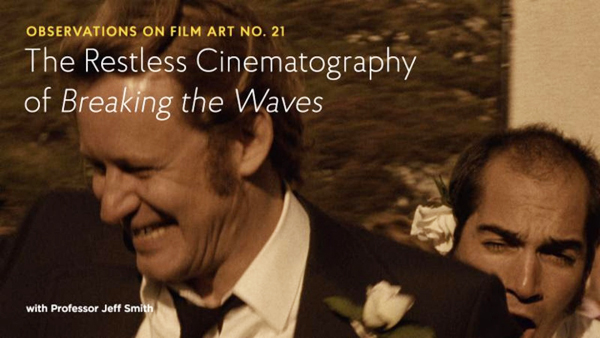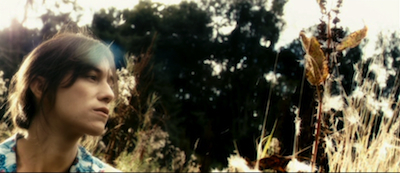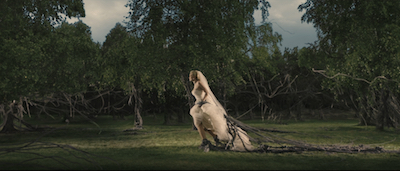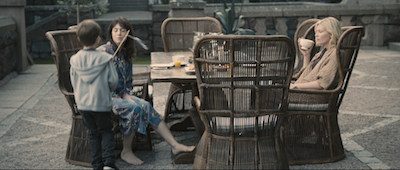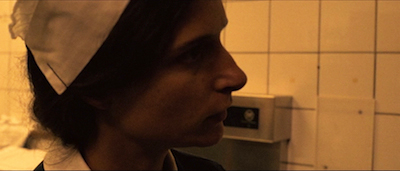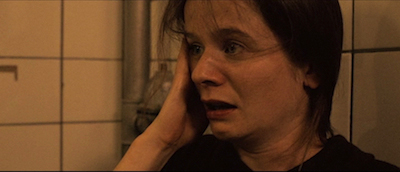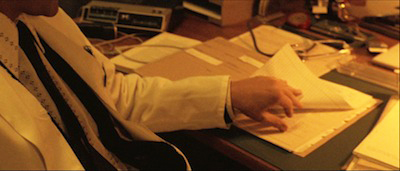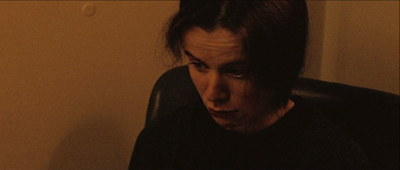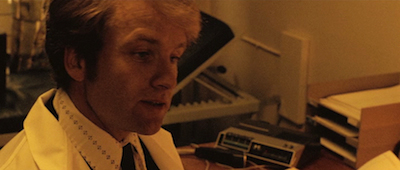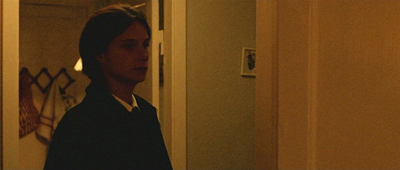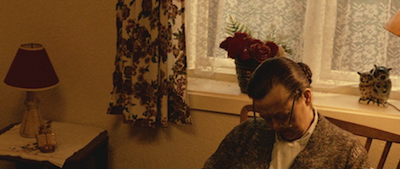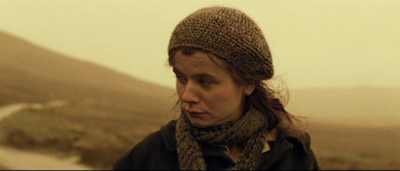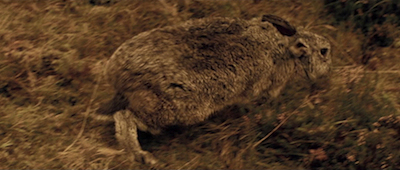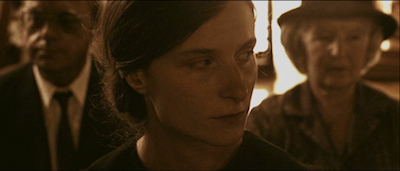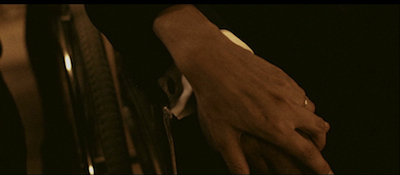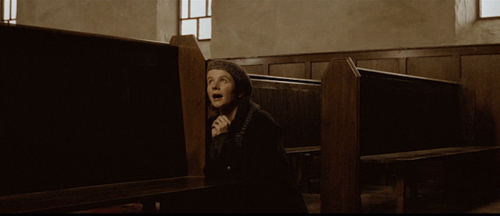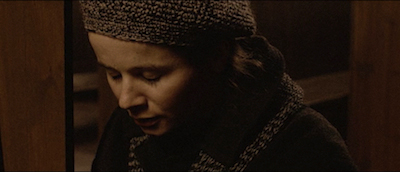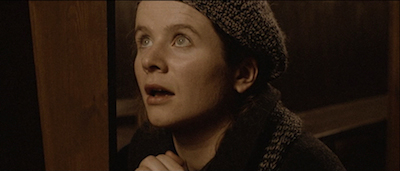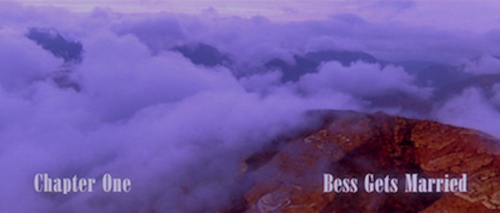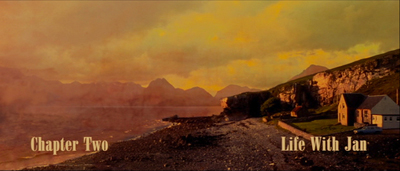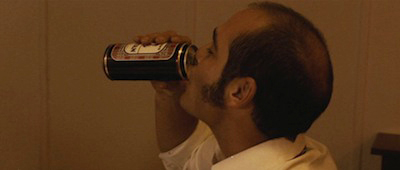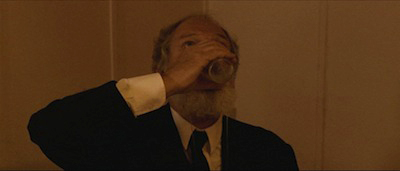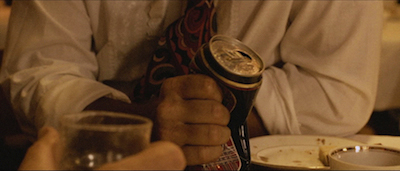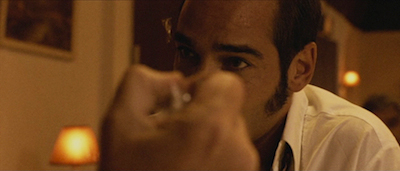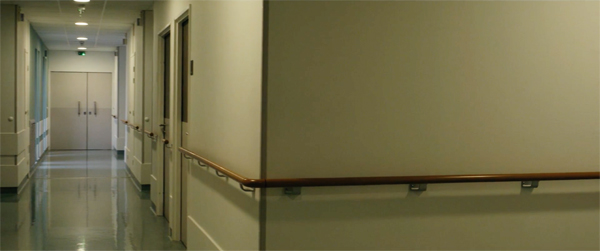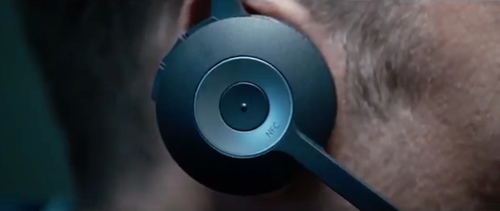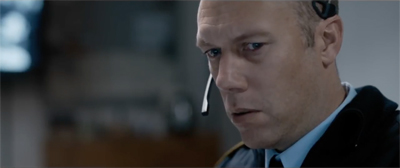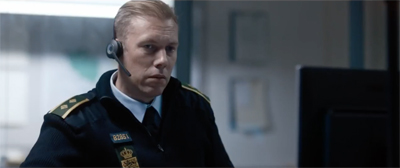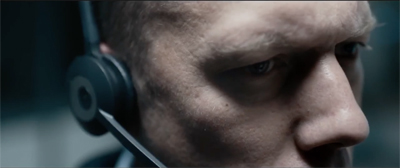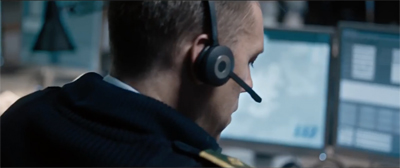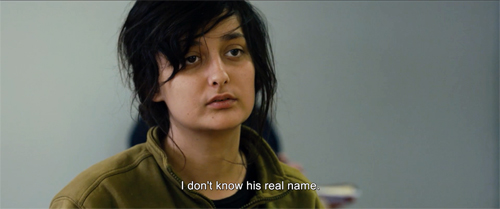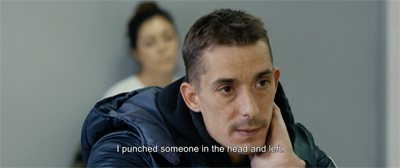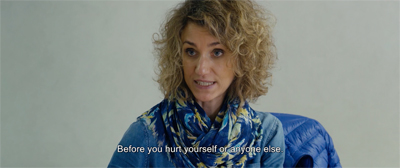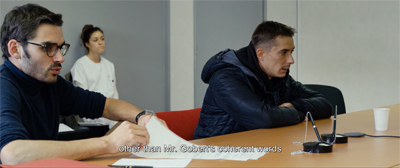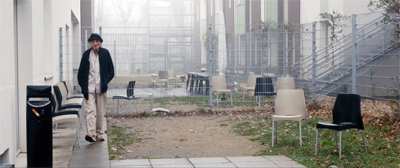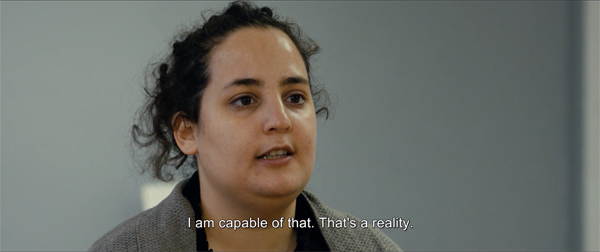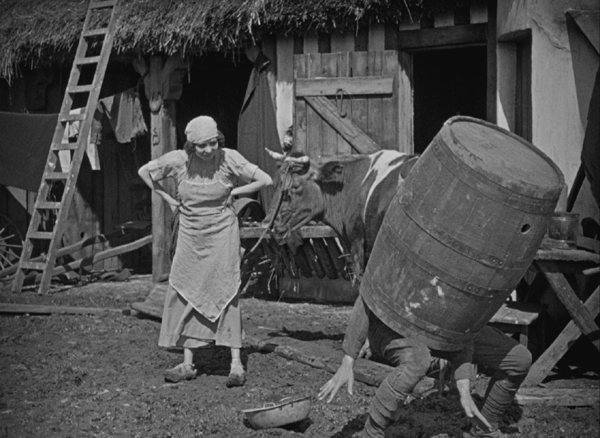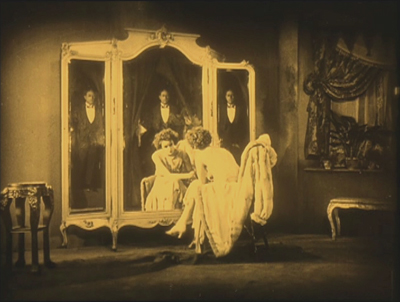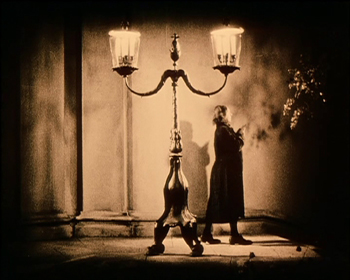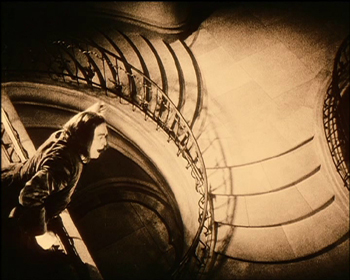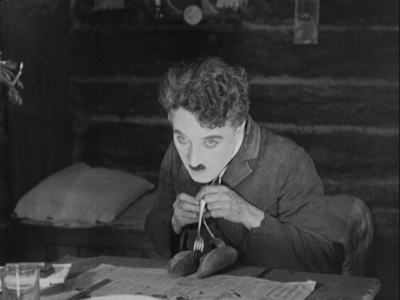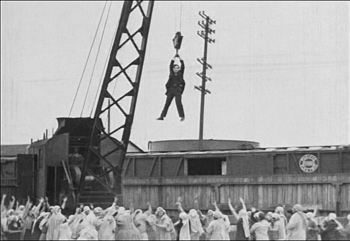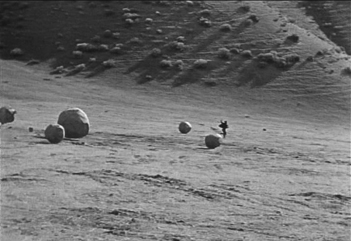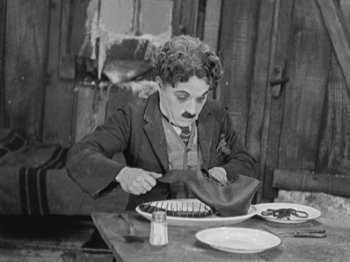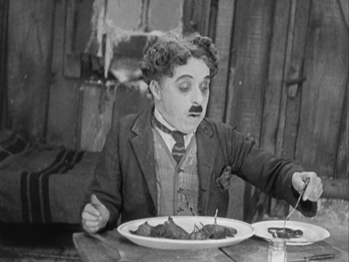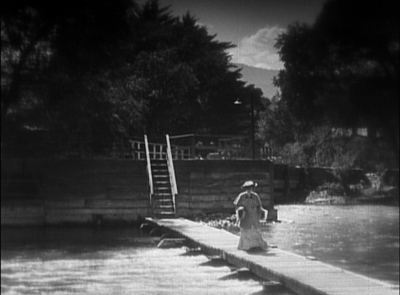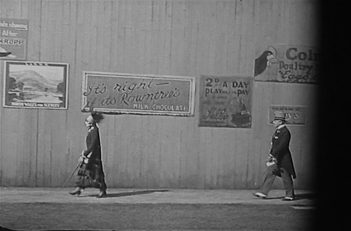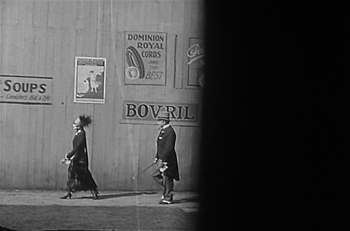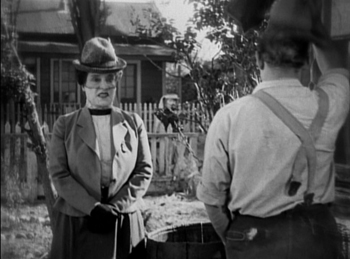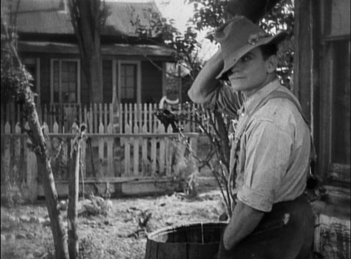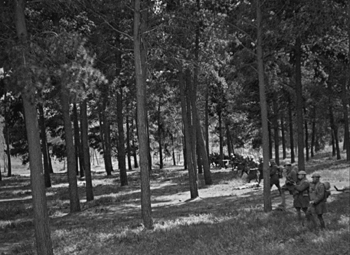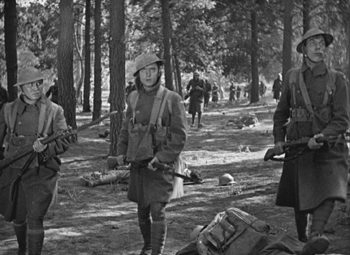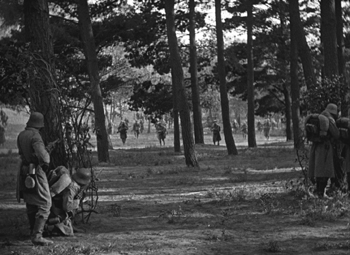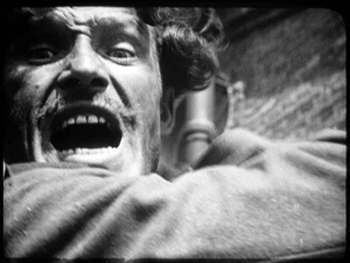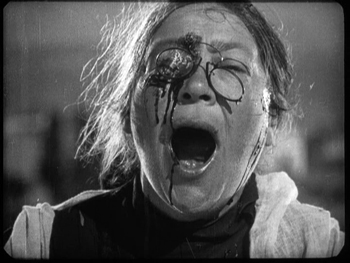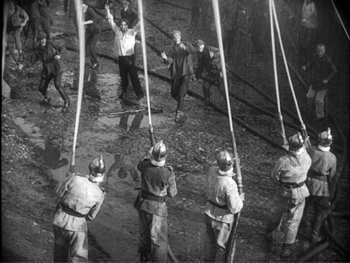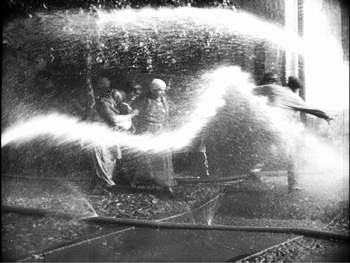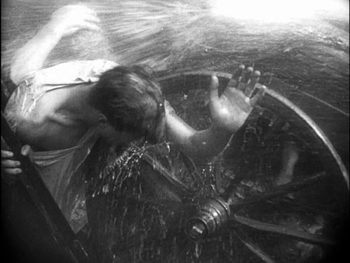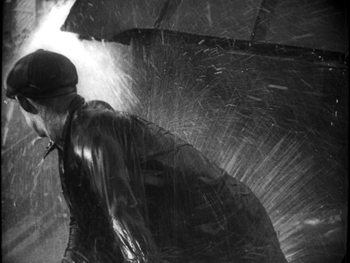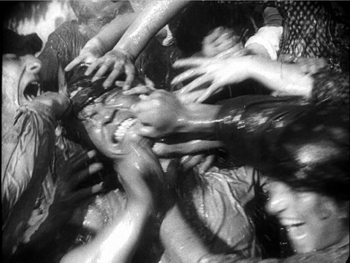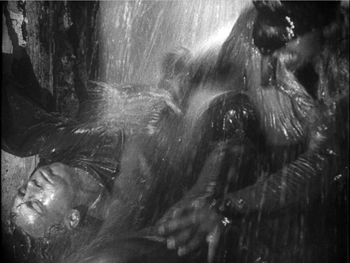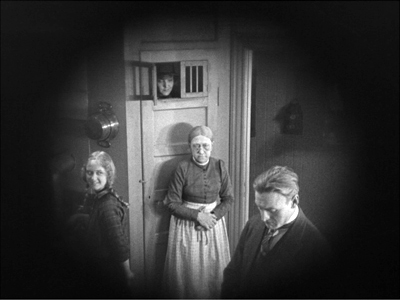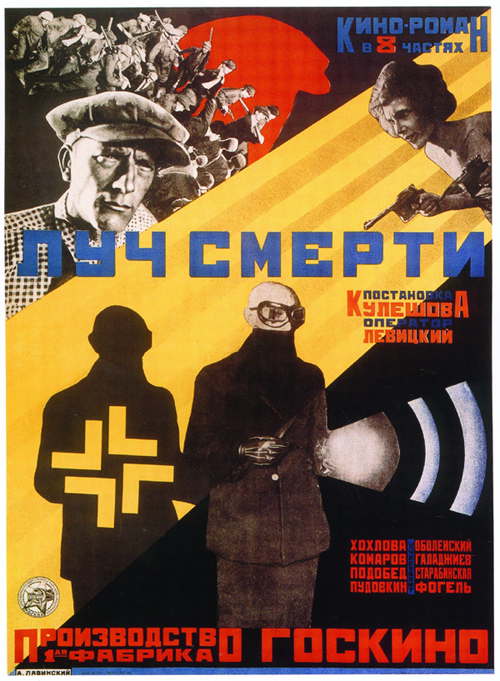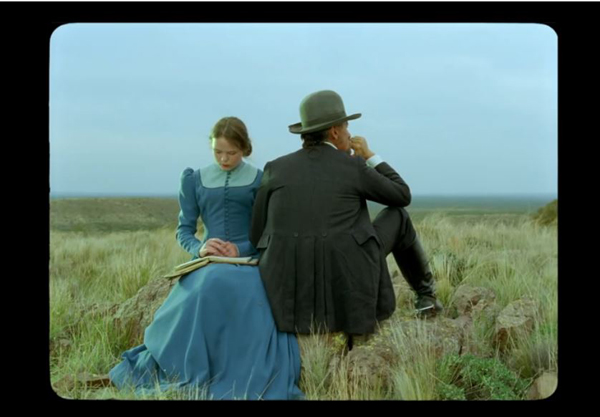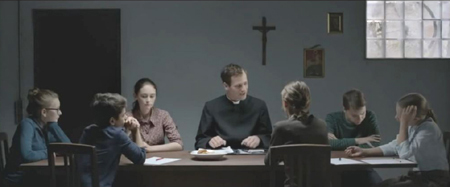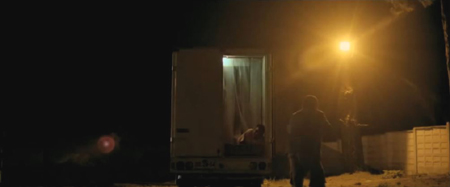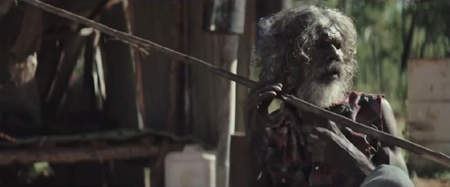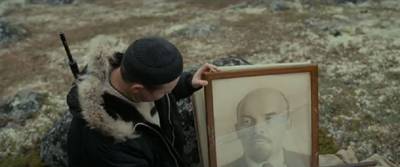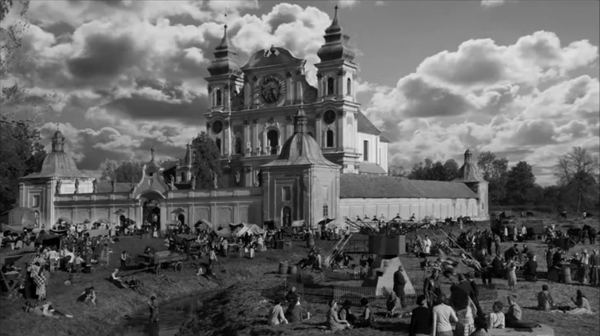Archive for the 'National cinemas: Denmark' Category
The camera as perpetual motion machine: Jeff Smith on BREAKING THE WAVES
Jeff Smith’s analysis of von Trier’s film has been posted on our series on the Criterion Channel of FilmStruck. Here, as is his custom, he offers more insights into this extraordinary work.
I still remember the shock I felt watching Lars von Trier’s Breaking the Waves for the first time. Some of it was undoubtedly a response to the film’s emotionally unsettling narrative. Yet I also wasn’t quite prepared for the caught-on-the-fly quality of Robby Müller’s handheld cinematography.
Was this the same director who had created such striking, high-contrast, black and white images for Zentropa?
Was this the same Robby Müller who composed the austere, yet stylish landscapes shots in Kings of the Road, Paris, Texas, and Down by Law?
In contrast to the very controlled look of those titles, the prologue to Breaking the Waves establishes a more muted visual style. Interior spaces look washed-out and the color is drained from the beautiful Scottish landscape. This effect was created by shooting on 35mm, scanning the negative to video, and transferring the altered footage back to film.
The camera also moves constantly. It anxiously follows action as it unfolds to capture a sense of both intimacy and immediacy. In Zentropa, the actors mostly were subsumed into the overall visual design of the image. In Breaking the Waves, the specific choices in editing and cinematography were subordinated to the actors’ performances. For Trier, this choice was partly dictated by the material. He wanted to preserve a sense of existential mystery about the film’s events. The decision to shoot in a raw, naturalistic style was necessary to keep the film believable.
Breaking the Waves also laid down a marker in terms of von Trier’s commitment to the dictates of the Dogme 95 manifesto. Although the film departs from those principles in significant ways, it previews the even nervier approach von Trier takes in The Idiots.
Yet elements of pictorial stylization are retained in Breaking the Waves, and they foreshadow the formal tensions that characterize much of von Trier’s later work. In Dancer in the Dark, the juxtaposition of stylization and naturalism is evident in the way Bjork’s musical numbers provide escape from the grim misery of Selma’s daily existence. Antichrist opens with luminous black and white imagery in super-slow -motion that directly contrasts with the slightly more desaturated color seen in the rest of the film.
Melancholia begins with fantastic, colorful, almost still tableaux accompanied by an excerpt from Wagner’s Tristan and Isolde. This differs markedly from the rest of the film which is shot in the semi-documentary style seen in Trier’s Dogme work.
In what follows, I trace the way Breaking the Waves’ dialectic between naturalism and stylization is expressed in particular visual motifs. I also show how these techniques reinforce some of von Trier’s larger thematic concerns. Warning: some spoilers ahead.
Camera playing catchup
Robby Müller’s handheld cinematography in Breaking the Waves fulfills a number of different objectives. First and foremost, the constant, restless movement adds a visual dynamism that contrasts with the locked-down camera frequently seen in “slow cinema.” Secondly, the association of this style with documentary adds a jolt of authenticity to the scenes of Jan aboard ship and the various emergencies that occur at the hospital. Lastly, the “caught on the fly” quality of the images lends a sense of intimacy and immediacy to the character’s interactions.
Breaking the Waves’ most common technique involves the use of rapid pans to convey a feeling of imminence–the sense of pushing us toward what is just about to happen in the scene. Those anticipatory pans pans serve a number of storytelling functions.
They’re often used during dialogue scenes as a variant of more conventional shot/reverse shot techniques. In the hospital, when Bess and Dodo discuss Jan’s sick fantasies, the camera swivels between the two speakers some eight times.
The entire conversation is handled in five longish takes instead of the dozen or so shots we’d get if von Trier had used shot/reverse shot.
More commonly, von Trier’s dialogue scenes use quick pans to capture another character’s reaction before then cutting back to the other speaker. Near the midpoint of Breaking the Waves, we see Richardson rifling through the pages of Bess’s file. Richardson asks Bess about her care under another doctor. The camera swings swiftly over to Bess who professes ignorance of this prior episode.
The camera then pans back to Richardson.
He acknowledges that her treatment was related to her brother’s death before von Trier eventually cuts back to Bess. Given the emphasis on performance during shooting, these panning movements keep the actors in the moment, enhancing the impression of dramatic intimacy and visual energy. But the style also enables Trier to shoot coverage so that he can select between different takes during editing.
In some instances, these rapid shifts from one character to another preserve the interactions of the ensemble within a single take. This occurs, for example, as the wedding party reacts to the sudden appearance of rain. We see it again later when Jan and his buddies pass around a flask of booze.
In still other cases, these rapid pans enhance the dramatic impact of eyeline matches. The viewer is often cued to these moments by a character’s glance offscreen and their facial expression. The camera then pivots to reveal what is in the offscreen space. A fairly early instance of this is when Dodo returns to Bess’s house to find her sitting quietly and Bess’s mother asleep.
Later Trier uses Bess’s glance offscreen to cut during a whip pan to a rabbit on the side of the road.
The moment serves as counterpoint to what we’ve just seen. Bess has vomited in disgust after a sexual encounter on a bus. The way she wrinkles her nose at the bunny reminds us of her childlike naiveté.
The panning motif pays off during the inquest into Bess’s death. Dr. Richardson testifies that Bess died because of her inherent goodness. Unsurprisingly, this claim is met with skepticism from the magistrate presiding over the hearing. Von Trier then cuts to a close-up of Dodo.
The camera tilts down and pans right as she grasps someone’s hand. It then tilts back up, to reveal Jan seated next to her.
The revelation comes as a bit of surprise because Trier has omitted the narrative action that connects the hospital scenes to the hearing. As mysterious as Bess’s death is, Jan’s recovery prompts even deeper questions. How is it that Jan survived when it appeared that his own death was imminent? More pertinent, how was his paralysis cured? In exploring the nature of the miraculous as part of the everyday, von Trier presents us with an enigma that he refuses to explain. It is here that we first begin to grasp the meaning of Bess’ religious faith and the impact of her self-sacrifice.
Are you there, God? It’s me, Bess.
Another important visual motif involves the long takes used for Bess’ talks with God. For the most part, Breaking the Waves’ average shot length is relatively short. But Trier sets off these moments of prayer by shooting them in a markedly different style.
More often than not, Müller’s camera photographs Bess in close-up or medium close-up to focus our attention on her face. Emily Watson uses the simplest of means to indicate the two sides of her dialogues with God. She shifts her gaze either upward or downward and changes her style of speech. Notably, in a suggestion of the degree to which Bess has internalized the church’s doctrines, her vocal impersonation of God sounds uncannily like one of the church elders.
These shots of prayer often unfold in real time lasting a minute or more. Their duration and more static framing convey both a sense of intimacy and important information about Bess’ motivation. Her imagined conversations with the heavenly father help to explain her actions in what would otherwise seem like wildly improbable changes in character.
These scenes also invite the viewer to consider Bess’ mental stability. Because of her childlike nature, Bess’ belief that God talks directly to her initially seems delusional. Yet, as the film goes on, Bess’ devotion to both God and her husband introduces the possibility that her actions are divinely inspired. By demonstrating her selfless love for Jan above all else, including her own safety, von Trier suggests that Bess’ sacrifice might be the reason for Jan’s recovery.
Or it could all just be a coincidence. Jan’s recuperation might not have any explicable cause, either physical or spiritual.
An energetic but casual style: raw immediacy as studied nonchalance
Throughout much of Breaking the Waves’ running time, von Trier’s narration seems to be rather communicative. The relentless camera movement and frequent cutting suggest a desire to capture the story as it unfolds and to transmit the most narratively salient material.
At key moments, however, the film’s visual techniques prove surprisingly reticent. Significant plot developments are sometimes handled in an offhand fashion. This strategy seems to be an extension of von Trier’s interest in making the film’s melodramatic narrative seem plausible. (Indeed, Breaking the Waves plays as a sort of Magnificent Obsession for the art film crowd.) More than that, though, this restraint also encourages viewers to form their own conclusions about the events depicted.
Consider Jan’s observation that Bess has blood on her wedding dress after consummating their marriage in the bathroom of the reception hall.
Another director would likely cut to an insert from Bess’s pov to underscore this image. It would serve as a symbol of her loss of innocence and as a grim foreshadowing of her ultimate fate (i.e. love as a form of blood sacrifice). But Trier refuses to force that interpretation on the viewer. Instead, by showing Bess calmly rinsing out the stain, von Trier allows the moment to resonate more organically.
This motif reaches a kind of apotheosis in the shot of Jan standing on crutches at Bess’s gravesite. The whole story has built toward this moment. Yet Trier treats it in a pointedly cursory fashion. Jan is photographed in long shot. The camera’s distance mollifies the character’s evident grief and refuses the viewer the kind of emotional catharsis we commonly associate with such rituals.
Jan’s silence also preserves the sense of mystery about how this turn of events occurred. Is Jan’s ability to walk evidence of the hand of God? Perhaps. Yet it might also be seen as a kind of cosmic joke, proof that humanity’s existence is ruled by forces of Kierkegaardian absurdism.
Rendering the kitsch sublime
Breaking the Waves’ most striking shots appear in the film’s chapter titles. Von Trier worked with the artist Per Kirkeby to create these images using fairly simple computer animation tools. Early in the production, they were described as merely panorama shots. But as the work developed, Trier described them as natural landscapes that evoked the Romantic tradition. This picture-postcard imagery is simultaneously both beautiful and banal, sublime and kitschy.
These more conventionally picturesque shots are further differentiated by Trier’s use of music. Each chapter title is accompanied by a different seventies classic: Elton John’s “Goodbye Yellow Brick Road,” Mott the Hoople’s “All the Way to Memphis,” Procol Harum’s “A Whiter Shade of Pale,” and David Bowie’s “Life on Mars.” The combination of music and saturated color enable these proleptic titles to function as the antithesis of the film’s handheld camerawork. As Kirkeby himself explained, they contrasted with Müller’s “tropistic intimacy.”
By using these titles to structure the narrative, von Trier preserves the opposition between naturalism and stylization until Breaking the Waves’ final shot. After Jan and his pals give Bess an impromptu burial at sea, they awaken the next morning to the sounds of bells ringing. We know from the scenes of Jan and Bess’ wedding that the source of the sound can’t be the church. Rather miraculously, the bells ring in the clouds unmoored from any terrestrial structure.
Von Trier denies us narrative closure by refusing to explain the meaning of Bess’ actions. But he gives us a kind of formal closure by synthesizing within a single image the different styles of cinematography seen throughout Breaking the Waves.
A riddle, wrapped in a mystery, inside an enigma
Breaking the Waves has always fascinated me as a study in contradictions. The film is about a miracle, but it is rendered in a style that seems wholly naturalistic. The cast was encouraged to improvise to create the desired sense of spontaneity. Yet Stellan Skarsgård reported that the actors mostly stuck to the script because the dialogue was so good as written. The plot hinges on an answered prayer, but the outcome is such a cruel twist of fate that it leads the viewer to doubt the nature of divinity entirely.
Even the central characters are defined by contradictions. Jan is a worldly outsider whose passions and joie de vivre raise the hackles of the strict Calvinist community where the principal actions take place. Bess was raised inside this overtly patriarchal structure, but she displays such childlike innocence that the inherently sinful nature of humanity somehow eludes her. Only von Trier would make a film in which a character’s adultery and debauchery are construed as holy acts of spiritual self-sacrifice. Bess might seem like a secular saint. But her sainthood is achieved by almost completely abasing herself.
This sense of contrast and contradiction also extends to Trier’s sources for Breaking the Waves. Much of the inspiration for Bess came from a children’s book entitled Gold Heart. The title character is a young girl who enters the woods with bread and other foodstuffs in her pockets. By the end of her journey, she is left naked and empty-handed. Her innate goodness and generosity makes her vulnerable, almost to the point of self-destruction. To quote von Trier, “Gold Heart is Bess in the film. She is goodness in its most absolute gestalt.”
At the other end of the cultural spectrum, though, von Trier incorporates ideas drawn from the films of his Danish predecessor, Carl Theodor Dreyer. The original title of Breaking the Waves was “Love is Everything,” the aphorism that Gertrud’s protagonist wanted as her epitaph. The basic dramatic situation is also reminiscent of Ordet. Like Inger, Jan is bedridden and near death. Like Johannes, Bess is the holy fool whose insistence on faith acts as a counter to science and rationality. And as in Dreyer’s work (La Passion de Jeanne d’Arc, Day of Wrath) a woman’s decisive actions put her at odds with a community steeped in religious dogma.
Breaking the Waves accent on contrasts is perhaps best epitomized in one of the film’s lighter moments. During Jan and Bess’s wedding reception, Terry and the Chairman of the church elders chug their beverages.
A close-up shows Terry crushing his beer can in an homage to a similar contest of machismo in Jaws.
It takes a rather dark turn, however, when the Chairman breaks the glass he’s holding with his bare hand.
Although the scene is a bit of a throwaway, it in many ways epitomizes the tonal shifts that mark von Trier’s work as a whole. All of his films contain moments of bleak humor, episodes where laughter slightly obscures the stories’ violent undertones and dark menace. To quote the spirit animals in Antichrist, “Chaos reigns” in the von Trier universe. And whether it is death, nightmare visions, or the literal end of the world, the prototypical von Trier hero confronts this chaos mindful of the immense absurdity of the inexplicable.
Thanks to Kim Hendrickson, Grant Delin, Peter Becker, and the whole Criterion team for their superb work on the video. A complete list of our FilmStruck installments is here.
Several different editions of Breaking the Waves have been released on home video. I recommend the Criterion dual-format edition. As one would expect, it contains lots of goodies in the extra features. These include deleted and extended scenes, interviews with Emily Watson and Stellan Skarsgård, and selected-audio commentary by von Trier, editor Anders Refn, and location scout Anthony Dod Mantle.
The published screenplay from Faber & Faber includes introductory essays by von Trier, artist Per Kirkeby, and Swedish film critic Stig Björkman.
Collections of interviews with Denmark’s enfant terrible can be found here and here. There’s also a good online interview with von Trier about Breaking the Waves.
The quote from Stellan Skarsgård can be found at Mental Floss.
I also want to thank the film faculty at the University of Copenhagen and Lars von Trier himself. I had the rare privilege of hearing the director discuss his work after a special screening of Antichrist that was arranged for attendees of the Society for Cognitive Studies of the Moving Image conference in 2009. I learned a lot from the experience, especially about von Trier’s fondness for mixed pictorial styles within his films.
Breaking the Waves (1996).
Wisconsin Film Festival: Confined to quarters
12 Days (2017).
DB here:
I try to watch any film at two levels. First, I want to engage with it, opening myself up to the experience it offers. Second, I try to think about how the film is made, why it’s made this way, and what those practices and principles can teach me about the possibilities of the medium. That second level of response, not easy to sustain in the thick of projection, comes from my research interests, something spelled out as the “poetics of cinema.”
Most critics, particularly those reviewing films on a daily basis, don’t have the time or inclination to reflect on that second level. I’m lucky to have the leisure to mull over what this or that film can suggest about film in general. When a new release points me toward something I think is intriguing, I’ll go back and watch it again. I saw Zama three times last year, and Dunkirk five times. After three viewings and getting the Blu-ray, I think I’m ready to write about Phantom Thread fairly soon.
Several films at the festival set me thinking. Vanishing Point (1971), which I hadn’t seen in a long time, confirmed my idea in Reinventing Hollywood that 1940s narrative strategies resurfaced in the 1970s. (Whew.) We get a crisis structure motivating a flashback, which itself embeds further flashbacks, everything tricked out with plenty of road rage.
Philippe Garrel’s Lover for a Day (L’Amant d’un jour, 2017) reminded me of how important coincidence is in narrative, particularly the accidental discovery of an important item of narrative information. You know, like coming home just as somebody’s about to commit suicide. Or discovering on your way to the WC that your lover’s having sex with someone else. I began to wonder if the episodic nature of art films, which are built more on routines than on sharply articulated goals, gets away with such handy accidents by suggesting that with so many characters drifting around, they’re bound to intersect occasionally. Realism once more becomes an alibi for artifice.
And I was happy to see American Animals (2018), an amateur-heist movie that uses my friend the flashback in a way that cunningly misleads us. I will say no more, except to refer you to other reflections on caper movies, and to express my hope that Ocean’s 8 will offer some fresh twists too.
All of these films employ what we might call omniscient point of view. The film’s narration shifts us among many characters in many places and times. Herewith, though, some thoughts on two films that tie us down.
Elbow room
The Guilty (2018).
One of cinema’s great powers is its ability to shift locales in the blink of an eye. Unlike proscenium theatre, bound to drawing rooms or perspective streets, a film can carry us from place to place instantly. Novels can do this too, of course, and so can certain theatre traditions, such as Shakespeare’s wooden O. But cinematic crosscutting swiftly from one line of action to another and back again is such a powerful tool that many theorists identified it as part of the inherent language of cinema. The medium seemed wired for camera ubiquity.
At certain periods, though, filmmakers kept to single spaces. Early cinema’s one-shot films locked us to a single view, and in the 1910s, long scenes would play out in salons and parlors. Even after the arrival of crosscutting and other editing strategies, some filmmakers embraced the kammerspiel, or “chamber play” aesthetic popularized in Germany. Lupu Pick’s Sylvester (1924), Dreyer’s Master of the House (1925), and other silent films built drama out of micro-actions in tight spaces. Later Hitchcock took this premise to an extreme in Lifeboat (1944), Rope (1948), Rear Window (1954), and to some extent in Dial M for Murder (1954). Rossellini’s Human Voice (1948) is another instance which, like Rope and Dial M, was based on a play.
The confined-space option reemerges every few years. Put aside Warhol’s psychodramas, so well analyzed by J. J. Murphy in his book The Black Hole of the Camera. Most of Tape (2001), Panic Room (2002), Phone Booth (2002), Locke (2013), and Room (2015) follow this formal option. Two striking films from our festival show that this strategy still holds a fascination for directors. They know that spatial concentration can shape the audience’s experience in unique ways.
In The Guilty director Director Gustav Möller ties us to Asger, a Danish policeman assigned to answering calls on an emergency line. A woman caller tells him she’s been kidnapped, and he tries to locate her while also giving her advice on how to protect herself. In the meantime, he summons police units to track the car she’s in and to investigate the household she’s left behind. In the course of this, we come to understand that he’s grappling with his own problems. He’s about to go before a judge for an action he committed on duty, and his partner is going to testify about it. The whole action takes place in more or less real duration, in eighty-some minutes of one night.
The Slender Thread (1965) similarly includes longish stretches confined to a suicide-hotline agency, but it supplies flashbacks that take us into the caller’s past. Here, we stay in place with Asger. By confining us to what he hears, and what little he sees on his GPS screen, the narration obliges us to make inferences that seem reasonable but that turn out to be invalid. I can’t say more without giving away the twists, but it’s worth mentioning how keeping major action offscreen enables the film to summon up the Big Three: curiosity (about the past), suspense (about the future), and surprise (about our mistaken assumptions).
The Guilty is a sturdy thriller, and it certainly works on its own terms. While restricting us to a character, it doesn’t plunge–as many films would have been tempted to do–into his mind, by means of flashbacks or fantasies. These would have “opened out” the film, but lost the laconic objectivity of the action we get.
The film coaxed me to reflect on how the reliance on the conversational situation allowed for a certain looseness at the level of pictorial style. Once we’re tethered to Asger at his workstation, not a lot hangs on choices about camera placement or shot scale. As long as his face, gestures, and body behavior are apparent, niceties of framing count for less. His reaction can be signaled adequately from many angles. He’s so stone-faced that even a 3/4 view from the rear suffices.
In other words, I can’t see that the situation is submitted to a stylistic pattern that would add another dose of rigor to the filmic texture. The style, I think, works to adjust our attention in the moment, in the manner of what I’ve called “intensified continuity,” rather than building longer arcs of pictorial interest. While the plot constraints are strict, the visual style seems less so.
What would be a way to make pictorial style more active? Well, the obvious cases are Hitchcock’s long takes in Rope and optical point-of-view in Rear Window. (And, I’d suggest, his use of 3D in Dial M.) Dreyer did something similar in The Master of the House, in which editing patterns activate a range of props and bits of setting. Films like these benefit from including several characters onscreen, providing details of setting and building up spatial “rules” that channel our vision. Or think of Kiarostami’s auto trips (I almost said “car-merspiel”), which limit camera setups pretty stringently. Ditto Panahi’s ways of stretching the notion of “house arrest” in This Is Not a Film (2011), Closed Curtain (2013), and Taxi (2015)–films that tantalize us with the possibility of glimpsing the world outside.
Möller chose, with good reason, to rivet our attention on two basic elements: the calls and Asger’s responses. The cop’s interactions with others in the office are minimal, and there’s almost no play with props or setting, apart from a moment when Asger decisively snaps down the windowblinds. Our attachment breaks off only at the end, at the conventional moment when the protagonist turns from the camera and walks away.
The tight concentration enhances both plot action and character revelation, and we’re obliged to listen more closely than we do in most movies. Along the way, blinks and eye-shifts and finger-tapping become major events. Still, The Guilty reminded me that every choice cuts off others, forces new choices, sets up constraints–and new opportunities. Film art is full of trade-offs.
12 Day wonder
12 Days (2017).
A more “dialectical” approach to confined space is on display in Raymond Depardon’s documentary 12 Days (2017), probably the most emotionally wrenching film I saw at our fest. The situation is a similar to that in his Délits flagrants (1994), which recorded police interrogations of suspects. The official procedure captured here is a hearing, mandated within twelve days of a patient’s being involuntarily committed to a psychiatric hospital. A judge reviews the case to determine whether the patient should be set free.
Sessions with ten patients take us along a spectrum of disturbance, from a woman believing herself persecuted in her office to a man whose inner voices commanded him to stab a stranger. The last petitioner, a woman sufficiently aware of her illness to admit that she can’t care for her baby, makes a lucid case for being allowed to visit the child occasionally.
All these encounters are shot in a simple but strict fashion. In three reverse-shot setups, we see the petitioner, the judge, and a wider view of the petitioner and the lawyer who states the case.
This neutral approach, far less free-ranging and nerve-wracking than the shots in The Guilty, doesn’t try to amp up the suspense with cut-ins or zooms or pans. It throws all the emphasis on the interchange. Call it Premingerian, if you must.
Sandwiched in between these inquiries are shots of the hospital itself. We’re still confined, in that we never leave the grounds, but these let us breathe a little. Sometimes these interludes are simply quiet tracking shots down empty corridors; sometimes we hear wails and cries behind locked doors; sometimes we see the patients in a rest area, smoking or pacing or simply staring.
By respectfully observing the surroundings, Depardon lets us into a bit of the texture of the patients’ lives and makes us understand that this hospital, while apparently not very oppressive, is still far away from freedom.
Confronting 12 Days we on the outside are forced to balance compassion with prudence. Should a calm, polite man who believes he beatified his father by killing him be allowed free access to our world? Most of the patients we see are remanded for further treatment, but one leaves the judge ambivalent, to the point that we aren’t told of the final decision. We’re left to reflect that to become wholly human, we must confront madness in our midst. As the opening quotation from Foucault has it: “The path from man to true man passes through the madman.”
Thanks as usual to our Wisconsin Film Festival programmers: Ben Reiser, Jim Healy, Mike King, Matt St John, and Ella Quainton. Thanks as well to Tim Hunter for giving us access to Vanishing Point. In all, it was a swell event. See you there next year?
12 Days reminded me that one of the less-known examples of early Direct Cinema was Mario Rispoli’s Regard sur la folie (1962), which presents afflicted patients and their caregivers with a surprising lack of sensationalism.
We’ve written a fair amount about site-specific narratives. I discuss the crystallization of the trend in Reinventing Hollywood: How 1940s Filmmakers Changed Movie Storytelling, and I consider its recent revival in The Way Hollywood Tells It: Story and Style in Modern Movies. On the blog, we’ve discussed Panic Room, Dial M for Murder, The Master of the House, This Is Not a Film, Closed Curtain, and the Kammerspielfilm. And on coincidence, you can drop by here.
12 Days.
The ten best films of … 1925
The Big Parade (1925).
Kristin here:
As all about us in the blogosphere are listing their top ten films for 2015, we do the same for ninety years ago. Our eighth edition of this surprisingly popular series reaches 1925, when some of the major classics of world cinema appeared. Soviet Montage cinema got its real start with not one but two releases by one of the greatest of all directors, Sergei Eisenstein. Ernst Lubitsch made what is arguably his finest silent film. Charles Chaplin created his most beloved feature. Scandinavian cinema was in decline, having lost its most important directors to Hollywood, but Carl Dreyer made one of his most powerful silents.
For previous entries, see here: 1917, 1918, 1919, 1920, 1921, 1922, 1923, and 1924.
The lingering traces of Expressionism vs the New Objectivity
The Joyless Street (1925).
Last year I suggested that German Expressionism was winding down in 1924. It continued to do so in 1925. Indeed, no Expressionist films as such came out that year. What I would consider to be the last films in the movement, Murnau’s Faust and Lang’s Metropolis, both went over budget and over schedule, with Faust appearing in 1926 and Metropolis at the beginning of 1927.
Murnau made a more modest film that premiered in Vienna in late 1925, Tartuffe, a loose adaptation of the Molière play. The script adds a frame story in which an old man’s housekeeper plots to swindle and murder him. The man’s grandson disguises himself as a traveling film exhibitor and shows the pair a simplified version of the play, emphasizing the parallels between the hypocritical Tartuffe and the scheming housekeeper.
The film has some touches of Expressionism but cannot really be considered a full-fledged member of that movement. The lingering Expressionism is not surprising, considering that some of the talent involved had worked on Robert Wiene’s Das Cabinet des Dr.Caligari: screenwriter Carl Mayer, designers Walter Röhrig and Robert Herlth, and actors Werner Krauss and Lil Dagover.
The visuals include characteristically Expressionist moments when the actors and settings are juxtaposed to create strongly pictorial compositions. These might be comic, as when the pompous Tartuffe strides past a squat lamp that seems to mock him, or beautifully abstract, as when Orgon is seen in a high angle against a stairway that swirls around him:
A restored version is available in the USA from Kino and in the UK in Eureka!‘s Masters of Cinema series. (DVD Beaver compares the two versions.) The restoration was prepared from the only surviving print, the American release version; it runs about one hour.
The other German film on this year’s list, G. W. Pabst’s The Joyless Street, contrasts considerably with Tartuffe. It was arguably the first major film of the Neue Sachlichkeit or New Objectivity trends in German cinema. I have already dealt with it in a DVD review entry shortly after its 2012 release. The restoration incorporated a good deal more footage than had been seen in previous modern prints, but it remains incomplete.
Once more the comic greats
The Gold Rush (1925).
For several years now these year-end lists have mentioned Charles Chaplin, Buster Keaton, and Harold Lloyd, in various combinations. Early on it would was Chaplin alone (Easy Street and The Immigrant for 1917) or Lloyd and Keaton alone (High and Dizzy and Neighbors for 1920). In a way most of these films were placeholders, signalling that these three were working up to the silent features that were among the most glorious products of the Hollywood studios in the 1920s. In our 1923 list, each found a place with a masterpiece: Chaplin’s A Woman of Paris, Keaton’s Our Hospitality, and Lloyd’s Safety Last.
This year we may surprise some by giving Lloyd a miss. For years The Freshman was thought of as his main claim to fame, perhaps alongside Safety Last. I think this was largely because The Freshman was the one of the few Lloyd films that was relatively easy to see. (Perhaps also because Preston Sturges dubbed it an official classic by making a sequel to it (The Sin of Harold Diddlebock, aka Mad Wednesday, 1947.) Now that we have the full set of Lloyd’s silent features available, it emerges as a rather tame entry compared to Safety Last, Girl Shy, or our already-determined entries for 1926, For Heaven’s Sake, and 1927, The Kid Brother. Let’s just call The Freshman a runner up.
Keaton’s Seven Chances takes one of the most familiar of melodramatic premises and literally runs with it. James Shannon discovers from his lawyer than he stands to inherit a great deal of money if he is married by 7 pm on his 27th birthday–which happens to be the day when he receives this news. A misunderstanding with the woman he loves leads to a split, and in order to save himself and his partner from bankruptcy, Shannon determines to marry any woman who will volunteer in time. Hundreds turn up.
The result is another of the extended, intricate chase sequences that tend to grace Lloyd’s and Keaton’s features, and to a lesser extent Chaplin’s. In fact Seven Chances has a double chase. The first and longer part involves a huge crowd of women gradually assembling behind Shannon as he unwittingly walks along the street. This accelerates and keeps building, exploiting various situations and locales, as when the chase passes through a rail yard and Shannon escapes by dangling from a rolling crane above the women’s heads. Eventually the action moves into the countryside, where the brides temporarily disappear, taking a short cut to cut Shannon off, and he ends up in the middle of a gradually growing avalanche.
Seven Chances is available on Blu-ray and DVD from Kino.
Of all the films on this year’s list, Chaplin’s The Gold Rush is probably the most widely familiar. The Little Tramp character, here known only as a “Lone Prospector,” blends hilarity with pathos in a fashion that is actually typical of relatively few of the director/performer’s films overall. It is, however, how many people think of him.
The Gold Rush looks rather old-fashioned compared with Seven Chances. Although the opening extreme long shots of an endless line of prospectors struggling up over a mountain pass are impressive, much of the action takes place in studio sets, sometimes standing in for alpine locations. Both the cabins, Black Larsen’s and Hank Curtis’, are like little proscenium stages, with the action captured from the front. Yet the film depends on its brilliant succession of gags and on the Prospector’s status as the underdog who is also the resilient and eternal optimist.
The best bits of humor arise from Chaplin’s ability to create funny but lyrical moments by transforming objects metaphorically. Given the plot, some of the best-known gags arise from meals. One is the dance of the rolls, part of a fantasy sequence in which the Prospector dreams of entertaining a group of beautiful women at dinner (above), when in fact the women stand him up. Trapped by a storm in a remote cabin, the Prospector and his partner cook one of his shoes. He serves it on a platter and carefully “carves it, with the leather becoming the meat, the nails bones, and the laces spaghetti.
Many home-video versions of The Gold Rush have been released, but the definitive restoration of the 1925 version is available from the Criterion Collection.
The Golden Age in full swing
Lazybones (1925).
When people speak of the “Golden Age” of the Hollywood studio system, they usually seem to mean the 1930s and 1940s (and the lingering effects of the system in the 1950s). A look at Hollywood films of the 1920s shows that it was already functioning at full steam. Three features of 1925 display the utter mastery of continuity storytelling and style and a sophistication that matches films of subsequent decades.
Lady Windermere’s Fan may be the best silent made by Ernst Lubitsch, who has appeared on these lists before. It arguably ranks alongside Trouble in Paradise and The Shop around the Corner as one of the best films of his entire career. It’s a loose adaptation of the Oscar Wilde play, but it’s pure Lubitsch throughout.
Anyone who thinks that the classical Hollywood system was merely a set of conventions that allowed films to be cranked out with minimal originality could learn a lot from Lady Windermere’s Fan. Its completely correct use of continuity editing, three-point lighting, and the like does not preclude imaginative touches and methods of handling whole scenes. There’s the sequence when Lord Windermere visits the mysteriously shady lady Mrs. Erlynne in her drawing-room. The camera is planted in the center of the action, with frequents cuts as the two characters move in and out of the frame and even cross behind the camera. There’s not a hint of a mismatched glance or entrance across this complex and unusual series of shots. There’s the racetrack scene, as everyone present watches and gossips about Mrs Erlynne in a virtuoso string of point-of-view shots.
The racetrack scene ends with a wealthy bachelor following Mrs Erlynne out of the track. The camera moves left to follow her, keeping her in the same spot in the frame. As the man gradually catches up, Lubitsch uses a moving matte to hint at their meeting without showing it or cutting in toward the action.
A good-quality transfer of Lady Windermere’s Fan is only available on DVD as part of the More Treasures from American Film Archives 1894-1931. (Beware the copy offered by Synergy, which according to comments on Amazon.com is from a poor-quality, incomplete print.)
The one title on this list whose inclusion might surprise readers is Frank Borzage’s Lazybones. I remember being bowled over by this film during the 1992 Le Gionate del Cinema Muto festival in Pordenone, which included a Borzage retrospective. I found the more famous Humoresque (1920) a disappointment, but Lazybones was a revelation. This is another case of a film that was simply unknown when film historians started writing about the Hollywood studio era. It was not discovered until 1970, when it was found in the 20th Century-Fox archives. As a result, Lazybones was, as Swiss film historian Hervé Dumont put it in his magisterial book on the director, “revealed as the most poignant–and the most accomplished–of Borzage’s works before Seventh Heaven.”
Year by year since we started this annual list, I looked forward to recommending Lazybones, and now we arrive there. I rewatched it for the first time to see if it really deserved to make one of the top ten. The answer is yes. For me, this is as good as 7th Heaven, or as near as makes no difference.
It’s difficult to describe the plot of Lazybones, since it doesn’t have much of one. Steve (played by the amiable Buck Jones) is a very lazy young man living in a rural village. He has a girlfriend, Agnes, whose mother scorns him. The girlfriend has a sister, Ruth, who returns home with a baby in tow. In despair, Ruth leaves the baby on a riverbank and tries to drown herself (image at top of section). Steve rescues her, and she explains that unknown to her family, while she was away she married a sailor who subsequently went down with his ship. She has no proof of this and knows her tyrannical mother will assume that the baby is illegitimate. Steve decides to keep her secret and adopt the apparent foundling himself.
All this happens during the initial setup. Then the little girl, Kit, grows up into a young lady. Along the way, not all that much happens. Steve, lacking any goals, stays lazy, which sets him apart from the energetic, ambitious protagonists of most Hollywood films. Kit is shunned by her classmates and the townspeople, and Steve tries to shelter her from all this. He loves Agnes but quickly loses her to a richer, more respectable man. He goes off to fight in World War I, becomes an accidental hero, and returns home after perhaps the shortest battlefront scene in any feature of the period. Kit finds a boyfriend.
What makes all this riveting viewing is its mixture of quiet comedy and poignancy. Steve is so amiably and unrepentantly loath to work that he is scorned by nearly everyone, and yet he commits an act of great kindness for which he gets no credit at all, except from his devoted mother. It is clear that these snobbish townspeople would scorn him even if they knew how he has kept Kit out of the orphanage and made a happy life for her.
The film is beautifully shot, and Borzage displays such an easy mastery of constructing a scene, particularly in depth, that it is easy to miss the underlying sophistication. Early on, Agnes and her mother arrive at Steve’s house. As Agnes waits outside the fence in the foreground, Steve tips his hat to her, in the foreground with his back to the camera. The mother passes by him toward the house, her mouth fixed in a sneer. We may think that Steve is oblivious to this, but once she passes out of the frame in the foreground, he puts his hat back on and slips it down over his face rather cheekily as he glances at her, his gesture suggesting his indifference to her opinion of him. (Note also the subtle touch of his lazily fastened suspenders.)
Borzage has mastered the use of motifs that are so characteristic of Hollywood cinema. There’s a running gag about the dilapidated gate of the picket fence around Steve’s and his mother’s house, with each person remarking “Darn that gate!” as they struggle through it. The repetition becomes cumulatively funnier because about two decades pass in the course of the film without the thing being fixed. The acting, particularly of Buck Jones and Zasu Pitts (as Ruth), is affecting.
It’s difficult to convey the charms of such an unconventional film, but give it a try and you may be bowled over, too.
A superb DVD transfer of Lazybones was included in the lavish Murnau, Borzage and Fox box (2008). The 20th Century-Fox Cinema Archives series offers it separately as a print-on-demand DVD-R. I’ve not seen it but suspect that there would be some loss of quality in this format. Besides, every serious lover of cinema should have that big black box sitting on their shelves next to the Ford at Fox one.
Returning to the more familiar classics, my final Hollywood film of the year is King Vidor’s The Big Parade.
Apart from its success and influence, however, The Big Parade remains an entertaining, funny, and moving film. Vidor’s scenes often run a remarkably long time, suggesting the rhythms of everyday life. One such action involves James fetching a barrel back to where he and his mates are staying so that he can turn it into an outdoor shower. When nearly back, he encounters Melisande, whom he initially can’t see. His stumbling about and her increasing laughter at his antics are played out at length (see top), as is a supposedly improvised scene shortly thereafter where James tries to teach Melisande how to chew gum.
A very different sort of prolonged scene is the long march of James and his comrades through a forest full of German snipers in trees and machine-gunners in nests. They begin by walking through an idyllic-looking forest, then increasingly encounter fallen comrades, and finally reach the Germans.
For years the prints of The Big Parade available were less than optimum, with some based on the 1931 re-release version, where the left side of the image had to be cropped to make room for the soundtrack. A 35mm negative was discovered relatively recently, however, and is the basis for the superb DVD and Blu-ray versions released in 2013.
Finally, I turn you over to David for some comments on films that fall within his specialties.
Eisenstein, action director
Watch this. Maybe a few times.
These two seconds, violent in both what they show and the way they show it, seem to me a turning point in film history. Here extreme action meets extreme technique. The spasms of the woman’s head, given in brief jump cuts (7 frames/5/8/10), create a sort of pictorial fusillade before we get the real thing: a line of riflemen robotically advancing into a crowd.
It’s not usually recognized how often changes in film art are driven by showing violence. Griffith’s last-minute rescues usually take place in scenes of massive bloodshed; not only The Birth of a Nation but the equally inventive Battle at Elderbush Gulch use rapid crosscutting to treat a boiling burst of action. The Friendless One’s pistol attack in Intolerance is rendered in flash frames that Sam Fuller might approve of. Later, the Hollywood Western, the Japanese swordplay film, the 1940s crime melodrama, the Hong Kong action picture, and many other genres pushed the stylistic envelope in scenes of violence. Hitchcock’s vaunted technical polish often depended on shock and bloodletting, from a bullet to the face (Foreign Correspondent) to stabbing in the shower (Psycho). The free-fire zone of Bonnie and Clyde and Peckinpah’s Westerns took up the slow-motion choreography of death pioneered by Kurosawa. Extreme action seems to call for aggressive technique, and intense action scenes can become clipbait and film-school models.
Sergei Eisenstein is celebrated as the theorist and practitioner of montage, whatever that is; but he insisted that what he called expressive movement was no less important. Just as montage for him came to mean the forceful juxtaposition of virtually any two stimuli (frames, shots, elements inside shots, musical motifs), so he thought that expressive movement ranged from a haughty tsar stretching his stork neck (Ivan the Terrible) to peons buried up to their shoulders, squirming to avoid horses’ hooves (Que viva Mexico!). In Eisenstein, psychology is always externalized, crowds move as gigantic organisms, and any action can turn brutal. (I fight the temptation to call him S & M Eisenstein.) We can trace influences—Constructivist theatre, the chase comedies coming from America, his interest in kabuki performance—but when he moved into cinema from the stage, Eisenstein became an action director, in a wholly modern sense.
Eisenstein’s first two features bracket the year 1925. Strike was premiered in January, The Battleship Potemkin in December. The first was apparently not widely seen outside Russia until the 1970s, but the second quickly won praise around the world. Potemkin’s centerpiece, the Odessa Steps sequence, became an instant critical chestnut, proof that cinema had achieved maturity as an art. Owing nothing to theatre, this massive spectacle was as pure a piece of filmmaking as a Fairbanks stunt or a Hart shootout. But of course Eisenstein went farther.
The Steps sequence was probably the most violent thing that anybody had ever seen in a movie. A line of soldiers stalks down the crowded staircase. A little boy is shot; after he falls, skull bloodied, his body is trampled by people fleeing the troops. Another man falls, caught in a handheld shot. A mother is blasted in the gut, and her baby carriage, jouncing down the steps, falls under a cossack’s sword. A schoolmistress who has been watching in horror gets a bullet in the eye–or is it a saber slash? The sequence ends as abstractly as it began, if “abstractly” can sum up the horrific punch of these images.
The film is much more than this sequence, of course, but every one of its five sections arcs toward violence, and each payoff is shot and cut with punitive force. The mutiny itself is a pulsating rush of stunts, unexpected angles, and cuts that are at once harsh and smooth. The whole thing starts with a rebellious sailor smashing a plate (in inconsistently matched shots) and ends with the ship confronting the fleet, a challenge rendered by percussive treatment of the men and their machines.
In Strike, Eisenstein rehearsed his poetry of massacre, along with a lot of other things. Instead of rendering an actual incident, as in Potemkin, here he portrays the typical phases any strike can go through. The plot starts with injustices on the shop floor, escalates to a walkout, and then—of course—turns violent, as provocateurs make a peaceful demonstration into a pretext for harsh reprisals. Throughout, Eisenstein experiments with grotesque satire and caricature. The workers are down-to-earth heroic; the capitalists are straight out of propaganda cartoons; the spies are beastly, the provocateurs are clowns. Every sequence tries something new and bold, and weird.
The most famous passage, well-known from his writings if not from actual viewing, is the climax. Here a raid upon workers in their tenements is intercut with the slaughter of a bull. Montage again, of course, but what isn’t usually noticed is the remarkable staging of that police riot, with horsemen riding along catwalks and fastidiously dropping children over the railings. For my money, more impressive than this finale is the earlier episode in which firemen turn their hoses on the workers’ demonstration. The workers scatter, pursued by the blasts of water, until they are scrambling over one another and pounded against alley walls. This is Strike’s Odessa Steps sequence, and for throbbing dynamism and pictorial expressiveness–you can feel the soaking thrust of the water–it has few equals in silent film.
For Eisenstein, the bobbing, screaming head in my clip was the “blasting cap” that launched the Odessa massacre. Is the woman the first victim of the troops, or is her rag-doll convulsion a kind of abstract prophecy of the brutality to come? Yanked out of the actual space of the action, it hits us with a perceptual force that goes beyond straightforward storytelling. Kinetic aggression, making you feel the blow, is one legitimate function of cinema. Eisenstein is our first master of in-your-face filmmaking.
After many tries, archives have given us superb video editions of Potemkin and Strike, both available from Kino Lorber. Potemkin’s original score captures the film’s combustible restlessness. Strike seems to have been shot at so many different frame rates that it’s hard to smooth out, but the new disc makes a very good try, and it’s far superior to the draggy Soviet step-printed version that plagued us for decades.
Chamber cinema
Every so often a filmmaker decides to accept severe spatial constraints, creating what David Koepp calls “bottle” plots. Make a movie in a lifeboat (Lifeboat) or around a phone booth (Phone Booth) or in a motel room (Tape) or in a Manhattan house (Panic Room) or in a remote cabin plagued by horrors (name your favorite). In the 1940s several filmmakers were trying out a “theatrical” approach that welcomed confinement like this; Cocteau’s Les Parents terribles, H. C. Potter’s The Time of Your Life, and of course Rope are examples. Today’s filmmakers are still exploring “chamber cinema.” The Hateful Eight is the most recent instance, with most of its chapters set in Minnie’s Haberdashery.
Typically, the chamber films in any period aren’t “canned theatre” like the PBS or English National Theatre broadcasts. Chamber films push the camera into the space, often showing all four walls and letting us get familiar with the rooms the characters inhabit. But this requires not only a carefully planned setting but also a good deal of cinematic skill in smoothly taking us to the primary zones of action.
Carl Dreyer was one of the earliest exponents of chamber cinema. He had seen initial examples in German Kammerspiel (chamber-play) films like Sylvester (1924) and had made a mild version himself in Michael (1924). Dreyer took the aesthetic to new heights in The Master of the House (1925).
Long before Akerman’s Jeanne Dielmann, Dreyer gave us a film about housework. Ida’s husband Victor is unemployed, so while he loafs and drifts around town, she struggles to keep things going. He pays her back with scorn and abuse. The plot is structured around two days, which yield a before-and-after pattern. At the end of the first, Ida leaves Victor, and a month later, his realization of his mistakes is revealed by his behavior in the household. The drama comes not only from the characters’ conflicts but from the way they handle everyday things like butter knives and laundry lines.
Rendering the household in all its specificity obliges Dreyer to rethink continuity filmmaking. He lays out the geography of the home by shooting “in the round” and cutting on the basis of eyelines and frame entrances. (He displays the same confidence in the “immersive camera” that Lubitsch displays in Lady Windermere’s Fan.) He trains us to notice landmarks, to associate bits of action with particular areas of the apartment, and to sense the characters’ changing emotions in relation to small adjustments in composition. The film is an exceptionally fluid, assured one, and it prepares for more daring Dreyer experiments to come: the fragmented interior spaces of La Passion de Jeanne d’Arc, the creeping camera of Vampyr, and the intensely theatricalized late films Day of Wrath, Ordet, and Gertrud. Little-known at the time, The Master of the House has come to be regarded as one of the most quietly perfect of silent films.
The most lustrous edition of The Master of the House is the Criterion release. It contains an in-depth interview with Danish film historian Casper Tybjerg and a visual essay that Abbey Lustgarten and I prepared. Criterion has posted an extract from the essay. More about this release is here.
In connection with the eleventh edition of Film Art: An Introduction, to be published in mid-January, we have added ten new online Connect video examples. These include one based on clips from the Blu-ray of The Gold Rush, which the Criterion Collection has kindly allowed us to use. We discuss two contrasting styles of staging used for comedy effects in the isolated cabin set.
The Dumont quotation is from his Frank Borzage: Sarastro à Hollywood (Cinémathèque française, 1993), p. 108.
Lea Jacobs and Andrea Comiskey have examined the complicated early distribution of The Big Parade in their “Hollywood’s Conception of Its Audience in the 1920s,” The Classical Hollywood Reader, Steve Neale, ed. (Routledge, 2012), p. 97.
Eisenstein’s aesthetic of expressive movement, and its relation to montage, is discussed in David’s The Cinema of Eisenstein. On Dreyer’s “theatricalized” cinema see his The Films of Carl Theodor Dreyer, and this essay on its sources in 1910s tableau filmmaking. Eisenstein’s exactitude in matching gesture to sound and cutting is demonstrated in Lea Jacobs’ Film Rhythm after Sound, reviewed here.
Lev Kuleshov’s second feature, The Death Ray, doesn’t make our top-ten list for 1925, but as a bonus we include its poster (by Anton Lavinsky), which must rank among the most beautiful of that year.
Adieu to Vancouver 2014
Jauja.
Kristin here:
The Vancouver International Film Festival ended this past Friday. I had hoped to post a wrap-up entry over the weekend, but illness intervened. Herewith a summary of several films I enjoyed this year.
Too clever by half
Some films are obviously and thoroughly pretentious. This year Field of Dogs (Lech Majewski, 2014) fell into that category. I had had high hopes for it, since I very much liked Majewski’s The Mill & the Cross at the 2011 festival. Unfortunately, it’s a completely different film, overcomplicated and, for me, nearly unwatchable.
Two film, however, suffered from a different problem. They had absorbing stories and interesting stylistic approaches. I enjoyed both very much–except for unwise additions, in each case unnecessary and annoying.
Stations of the Cross (Dietrich Bruggemann, Germany, 2014) revolves around Maria, an adolescent girl raised in a household where a strict, old-fashioned version of Catholicism is practiced. Bruggemann takes the not uncommon approach of filming each scene in one lengthy, and in most cases static, take. In the opening scene, a priest instructs a small class of children about to take First Communion. The camera is placed in a planimetric framing, a technique used in several shots in the film:
As the lesson continues, Maria, seated to the priest’s right, gradually emerges as the student most versed in the topics under discussion. She stays after the others leave and hints to the priest that she wants to sacrifice herself to earn a miracle for her four-year-old brother, who has never spoken. Her belief that she must deny herself virtually all pleasures, comforts, and even necessities, as well as her guilt over the slightest perceived infraction, become increasingly apparent across the narrative. Her arguments with her harsh and inconsistent mother, who dominates the family, reveal her suffering. Despite the static shots, the story is never boring, and a scathing indictment of this brand of religious extremism builds up.
The problem is that Bruggemann inserts chapter titles before each scene/shot, numbered and with the descriptions of the fourteen Stations of the Cross. This inevitably connects Maria’s sufferings to those of Jesus. Each scene contains some parallel, however tenuous, to the station that it is supposed to illustrate. I found this distracting and occasionally ludicrous, as when the title describing Christ’s being stripped of his clothing cuts to a shot of a partially undressed Maria seated on a doctor’s examining table. (Jay Weissberg’s review for Variety sees deliberate humor in the film, but as far as I could see, Bruggemann takes all this as deadly serious.) This could have been an excellent film without the insistence on allegory, but as it is, one must try to ignore the interruptions to focus on the story.
Something rather similar happens in Jauja (Lisandro Alonso, Argentina, 2014). Again there is an absorbing story, though a very different one. In nineteenth-century Patagonia, a Danish engineer is doing surveying work to help a military group determined to wipe out the indigenous population. When his daughter runs off into the forbidding desert with a young soldier, the engineer follows on his own and experiences a series of increasingly disturbing and mystifying incidents, including some that could be classed as magical realism.
This is fascinating stuff, and in the print we saw, the beautifully composed landscape shots (almost the entire film takes place out of doors) were presented in a masked format reminiscent of old lantern slides or stereoscope images (see top, the opening one-shot, long-take scene). Most of the images from this film on the internet are in a more conventional 1:66 ratio, but the masked version seems far superior. One can only hope that the video release preserves it.
It’s a lovely, evocative, disturbing film, but just as we see a shot of the protagonist disappearing into a valley in a bleak landscape of black volcanic rocks, there is a cut to an epilogue set in a beautiful Danish castle. The daughter wakes up and goes for a walk with some dogs. End of film. How this is supposed to relate to the preceding story is a mystery, and one which thoroughly undercuts the tension slowly built up over the course of the Patagonian-set story. The scene of the hero disappearing would have made a fitting ending, leaving the solution to the tale’s mysteries open-ended.
I note from a recent story in Variety that Alonso has been chosen as the second filmmaker to be hosted in the Film Society of Lincoln Center’s new “Filmmaker in Residence” program. That’s good news, I think, but I hope Alonso will trust more in his story-telling ability and less in flashy tactics like this pointless epilogue.
Brief notices
One director who displays such trust is Alejandro Fernández Almendras, whose Chilean revenge tale To Kill a Man (2014) is both entertaining and morally and psychologically complex. We are almost entirely confined to the presence and knowledge of Jorge, a forest ranger who has grown accustomed to the casual violence in the neighborhood where he lives. He tries to avoid trouble, but his family is increasingly harassed by Kalule, a loathsome petty gang leader. As Jorge is mugged, his son is shot and then wrongfully imprisoned, and his house pelted with stones and threatening messages, he doggedly insists on going through the police, while his wife becomes increasingly frustrated with their lack of response.
Finally, after Jorge’s daughter is assaulted and nearly raped, he decides to act and sets out to eliminate Kalule. The film then follows his patient, careful planning, culminating in an understated but riveting long take of the truck in which Jorge has his victim trapped as he systematically sets up the mechanics of the killing. The death itself is not shown:
Hitchcock has said that in making Torn Curtain‘s big fight scene in the farmhouse, he wanted to show just how physically difficult it is to kill someone–as opposed to the seemingly effortless killings that fill American genre films. Almendras’ film is almost entirely about how difficult it is in all ways. Jorge takes a long time making his fateful decision, in executing it, in dealing with the body and evidence, and in living with what he has done. Most spectators, attuned to more conventional revenge plots and frustrated by Jorge’s initial resignation in the face of intolerable injustice, are probably cheering him on from an early point in the plot. But, as Almendras thoroughly shows us, it just isn’t that easy.
Charlie’s Country (Rolf De Heer, 2013) also centers very tightly on a protagonist beset by difficulties, but it sets a very different tone. It’s another Australian film focusing on aborigines and their problems under the rule of the white majority. Charlie is a genial elderly man living in impoverished circumstances in a village set aside for aborigines and run by local police. Their laws mystify him. His gun is taken because he cannot afford a license, and when he fashions a spear for hunting for food, it is taken away and destroyed as a dangerous weapon.
His health declines so far that the authorities send him to a hospital in a city far from his home, an apparent signal that he is dying. Instead, he escapes, lives with some street people, and finally makes his way home.
The film is entertaining enough, though it deals with familiar subject matter. It exists, though, primarily as a love letter to David Gulpilil, the most successful Australian aboriginal actor. His first film is also one of his best-known outside Australia, Walkabout, which I saw when it first came out, just after I had gotten my BA and was about to commence film-studies as a graduate student. (It’s a bit disconcerting to watch him playing an old man here and realizing that he is three years younger than me!) Gulpilil turns in an endearing performance that pretty much carries the movie.
I enjoyed and was impressed by Russian director Andrei Zvyagintsky’s Leviathan (2014), though I’m not sure it quite lives up to all the hype following its debut in competition at Cannes, where it won best screenplay. The story centers around the owner of a sprawling, dilapidated garage in a declining fishing port on Russia’s northwestern coast. He struggles to prevent a corrupt local mayor from appropriating his property illegally. (The hypocritical official wants to use the land to build a church to further his own reputation.) At the same time, the protagonist has remarried, and he must deal with his teenage son’s reluctance to accept a young stepmother.
The depiction of modern Russian society in the provinces is a grim one, albeit one displayed in sweeping landscape shots that suggest the waste of this stunning region. Many scenes involve the characters putting away great quantities of vodka. These include a hilarious set-piece in which the family and friends drive into the countryside for a drunken picnic complete with a shooting competition using portraits of historical Soviet leaders as targets.
Leviathan will be released in the USA by Sony Pictures Classics on December 31.
Papusza (Joanna Kos-Kralize and Krzysztof Kralize, 2013) is the second new black-and-white Polish film I’ve seen this year. The first was the much-heralded Ida (Pawel Pawlikowski, 2013), an austere tale of a young woman in the 1960s, about to take her vows as a nun when she learns that she comes from a Jewish family persecuted during World War I. Papusza is a more easily engaging film, with a relatively fast-moving historical drama set among Poland’s Roma (“gypsy”) population.
Papusza centers around Bronislawa Wajs, the first Roma woman to learn to read and write; she became a well-known poet nicknamed Papusza. The film adeptly balances sympathy for the Roma group at the center of the story, the victims of racial prejudice, with a clear-eyed depiction of the less savory aspects of Roma culture. Girls, kept ignorant and oppressed, are married off at a young age. The Roma society practices its own prejudices, rejecting any interactions with people outside their clan and treating non-Roma as fair game to be fleeced at any opportunity.
The lively culture of the Roma and their closeness to nature are shown in impressive landscape scenes, as in shots of the caravans on the move through bucolic countrysides or when the band sets up a camp and market outside a traditional church (below).
As of now there is no indication that the film will receive an American release. The only DVD available seems to be the Polish one, with no optional subtitles. Various small streaming services claim to be offering it, but again, possibly without subtitles and in some cases with timings that don’t correspond to the original 131 minutes.
And so another year at Vancouver has ended. As usual, we are left with the feeling that this event is one of the most pleasant ways to catch up with a huge amount of what is happening in world cinema.
Papusza












